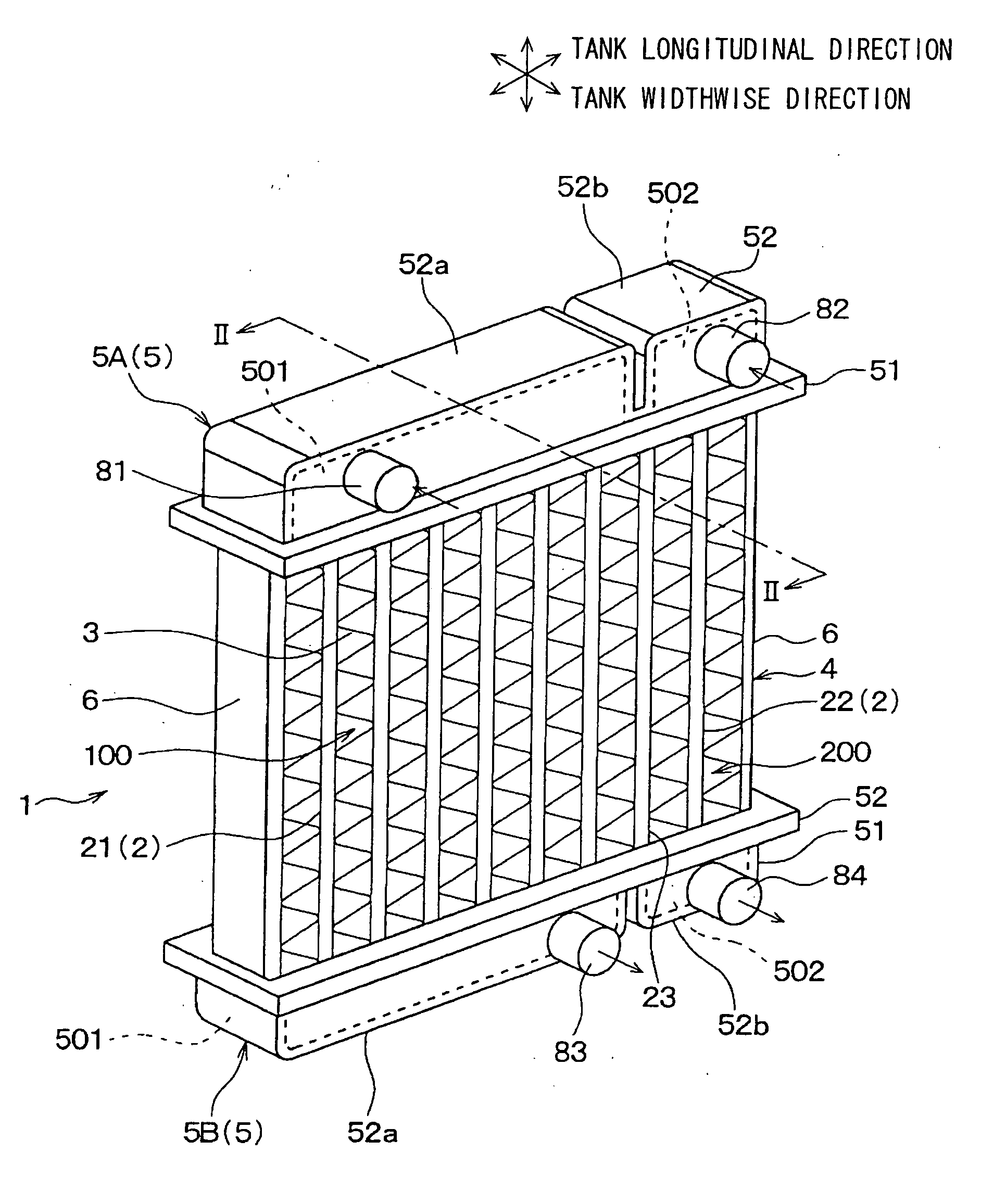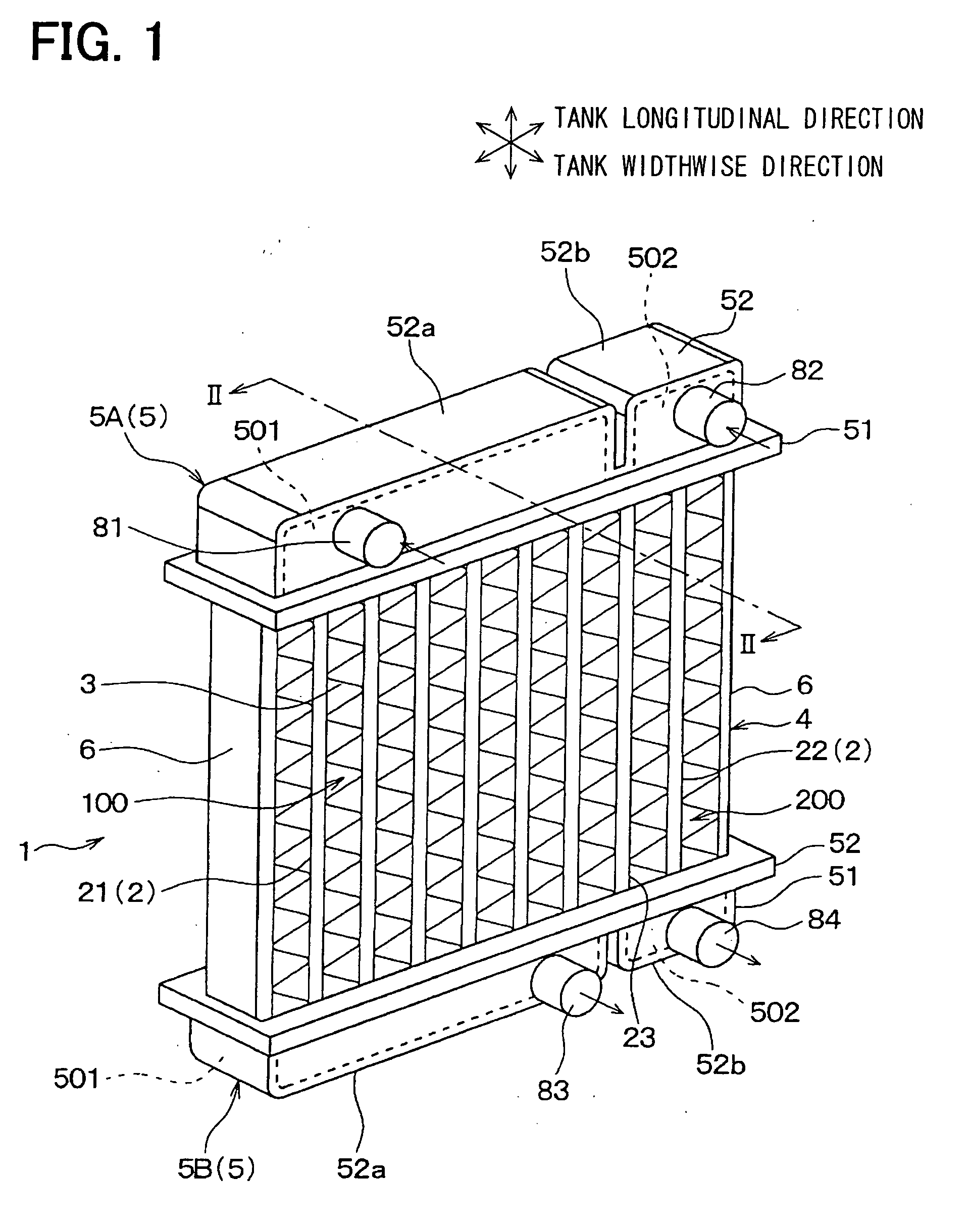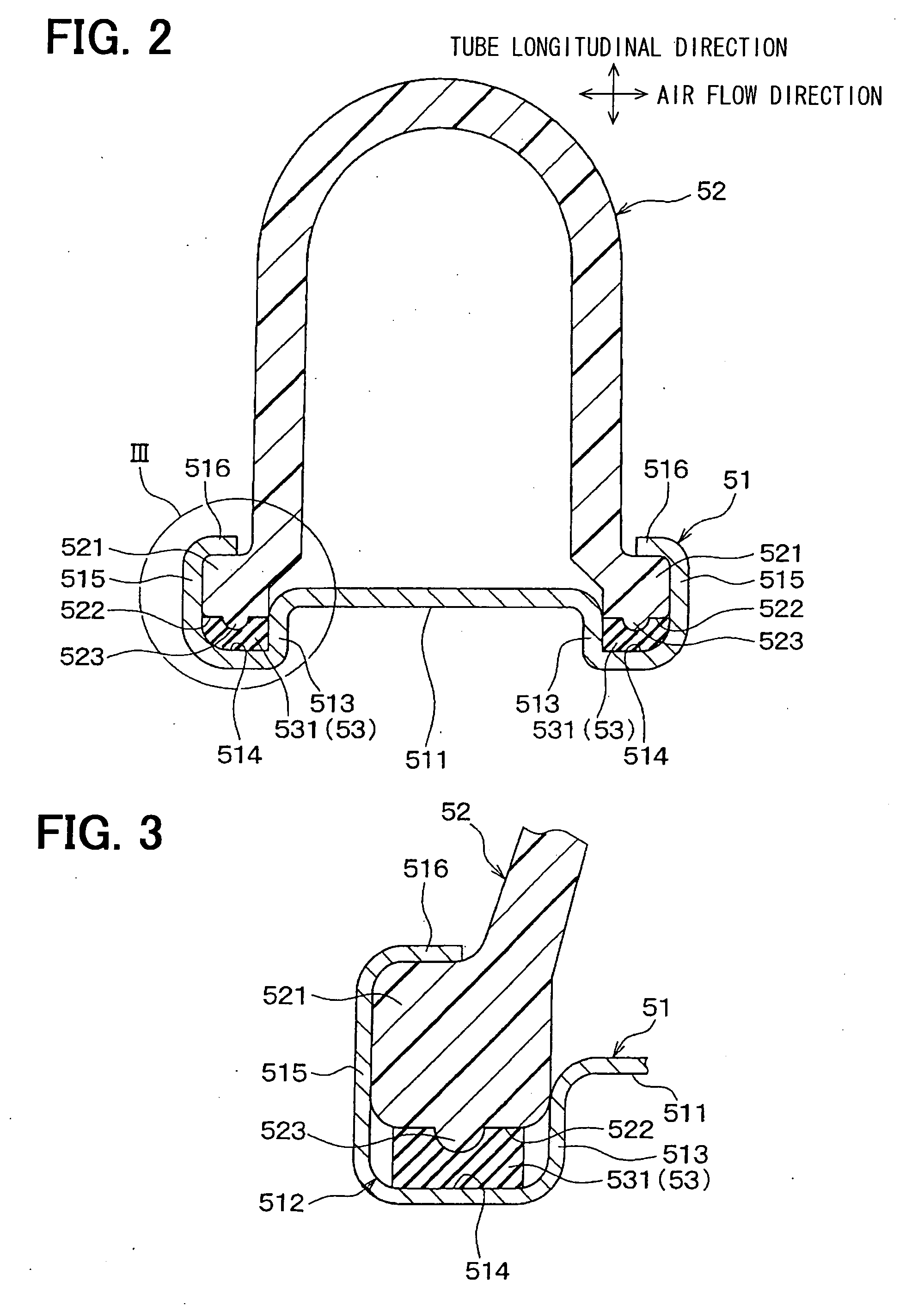Heat exchanger
a heat exchanger and heat exchanger technology, applied in the direction of heat exchanger fastening, lighting and heating apparatus, stationary conduit assemblies, etc., can solve the problems of difficult to apply uniform compression force, disadvantageously impossible to sufficiently secure the sealing performance, etc., to achieve uniform thickness, uniform thickness, uniform thickness
- Summary
- Abstract
- Description
- Claims
- Application Information
AI Technical Summary
Benefits of technology
Problems solved by technology
Method used
Image
Examples
first embodiment
The first embodiment of the present invention will be described below with reference to FIGS. 1 to 9. The present embodiment describes an example of a case, where a heat exchanger according to the present invention is applied to a heat exchanger for a hybrid vehicle, in which a traveling drive force is obtained based on an engine and a driving electric motor.
FIG. 1 is a perspective view illustrating a heat exchanger 1 of the first embodiment. As shown in FIG. 1, the heat exchanger 1 of the present embodiment has a core unit 4 and a pair of header tanks 5. The core unit 4 includes multiple tubes 2 and fins 3, and the pair of header tanks 5 is assembled on both end portions of the core unit 4.
The tubes 2 allow fluid to flow therethrough, and the tube 2 is formed to have a flat shape such that a direction of a longitudinal diameter of the tube 2 coincides with an air flow direction. Also, the multiple tubes 2 are arranged in parallel with each other in a horizontal direction such that ...
second embodiment
Next, the second embodiment of the present invention will be described with reference to FIG. 10. FIG. 10 is an enlarged sectional view illustrating a vicinity of dummy tubes 23 of a heat exchanger 1 according to the present second embodiment. As shown in FIG. 10, the partitioning seal surface 517 of the core plate 51 does not include holes, into which the dummy tubes 23 are inserted. Due to the above, the dummy tubes 23 remain not-inserted into the core plate 51, and thereby there is a clearance formed between the core plate 51 and a longitudinal end portion of the dummy tube 23. It should be noted that although there are two dummy tubes 23 in the present embodiment, there may be only one dummy tube 23. Also, there maybe three or more dummy tubes 23.
Also, conventionally, at a bonding part between the core plate 51 and the dummy tube 23, residue of blazing may damage the partitioning seal surface 517 of the core plate 51, and thereby degrading sealing performance of sealing between ...
third embodiment
Next, the third embodiment of the present invention will be described with reference to FIGS. 11 to 14. FIG. 11 is a perspective view illustrating a heat exchanger 1 of the present third embodiment, FIG. 12 is a cross-sectional view taken along a line XII-XII in FIG. 11, FIG. 13 is an exploded perspective view illustrating a header tank 5 of the heat exchanger 1 of the present third embodiment, and FIG. 14 is an exploded perspective view illustrating a main part in FIG. 13.
As shown in FIGS. 11 to 14, in the heat exchanger 1 of the present embodiment, two partition walls 7 are provided within the header tank 5 at a boundary between the first radiator unit 100 and the second radiator unit 200 in order to divide the in-tank space in a tube longitudinal direction. In other words, the two partition walls 7 are provided between the first tubes 21 and the second tubes 22. Also, the two partition walls 7 are arranged at predetermined intervals. Due to the above, the in-tank space within the...
PUM
 Login to View More
Login to View More Abstract
Description
Claims
Application Information
 Login to View More
Login to View More - R&D
- Intellectual Property
- Life Sciences
- Materials
- Tech Scout
- Unparalleled Data Quality
- Higher Quality Content
- 60% Fewer Hallucinations
Browse by: Latest US Patents, China's latest patents, Technical Efficacy Thesaurus, Application Domain, Technology Topic, Popular Technical Reports.
© 2025 PatSnap. All rights reserved.Legal|Privacy policy|Modern Slavery Act Transparency Statement|Sitemap|About US| Contact US: help@patsnap.com



